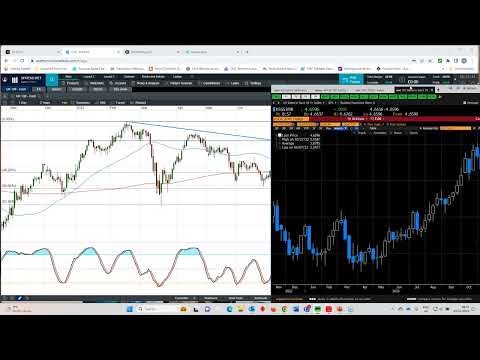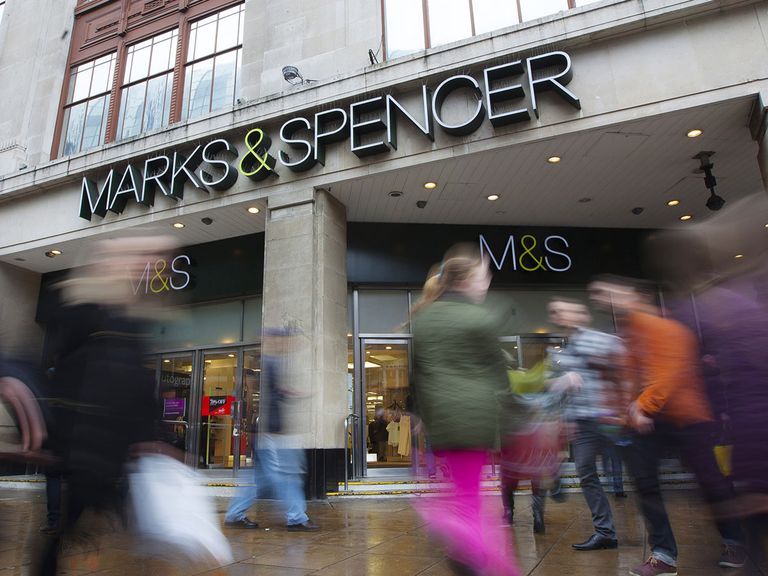Here's our pick of the top three economic and company events in the week commencing Monday 6 November:
RBA interest rate decision
Tue 7 Nov: The governor of the Reserve Bank of Australia, Michele Bullock, recently said that the RBA had a low tolerance for high inflation. Her comments prompted a bout of short-covering after it was announced on 25 October that Australia’s consumer price index rose 1.2% in Q3, above market forecasts of 1.1% and up from a 0.8% increase the previous quarter. At the RBA’s last meeting in October, interest rates were left unchanged at 4.1%, though officials said that further rate hikes might be necessary if inflation remained sticky. Another consideration is the Australian dollar, which remains closely tied to the fortunes of the Chinese economy, especially China’s demand for commodities. But demand from China remains weak. While the RBA’s benchmark rate is expected to be kept unchanged on Tuesday, there is an outside chance of a rate rise. Whatever happens, rates are unlikely to be cut much before 2025.
Marks & Spencer half-year results
Wed 8 Nov: M&S shares, up almost 80% year to date, have been one of the FTSE 100’s big winners in 2023. In May the retailer announced a strong set of full-year numbers, with statutory revenue rising 9.6% to £11.93bn, £1bn higher than last year and well above expectations of £11.7bn. Growth was driven by a strong performance from both food and general merchandise. Food sales rose 8.7% to £7.2bn, while clothing and home sales increased 11.5% to £3.7bn. Profit after tax soared 18% to £364.5m, leading M&S management to signal the possible return of the dividend in the coming fiscal year. This prospect received a boost in August when M&S upgraded its full-year forecast as its food business saw like-for-like sales rise 11%, although clothing and home sales only rose 6%. M&S indicated that a challenging consumer market could act as a headwind going forward – a risk that may receive attention in the upcoming half-year statement.
UK Q3 GDP
Fri 10 Nov: Having got off to a better-than-expected start to 2023, the UK economy seems to have slowed in the second half of the year amid higher interest rates and rising prices. Although the headline rate of inflation has come down, food prices are still rising at close to double-digit levels. This means that incomes are still being squeezed, just not as tightly as a year ago, even though the energy price cap has fallen. The UK economy grew by an upwardly revised 0.3% in Q1 and by 0.2% in Q2. The third quarter is unlikely to match that. Estimates suggest that the UK economy may have contracted 0.1%, partly due to weak retail sales. On a monthly basis, UK economic output fell 0.6% in July, before rebounding with a 0.2% uptick in August. A similar 0 2% expansion is forecast for September. We’re also due an update on industrial and manufacturing production, both of which declined month-on-month in July and August.
Here's our pick of the rest of the week's major economic and company events:
European services PMIs (October)
Mon 6 Nov: The latest flash PMIs from Europe, the UK and US showed that there is an element of divergence between the US and the rest. In the US, economic activity picked up in October, based on recent data. The UK services PMI reading, steady at just above 49, is holding up slightly better than those of its European peers. In France and Germany, services activity is in contraction territory at 46.4 and 48, respectively.
China trade balance (October)
Tue 7 Nov: The recent China Q3 GDP print showed a pickup in economic activity, despite recent trade data showing that domestic demand has been lacklustre. This weakness has been reflected in price pressures, with both CPI and PPI showing signs of deflation. In September exports from China declined 6.2% year-on-year, the fifth decline in as many months. Meanwhile, imports to the country fell 6.3% year-on-year, the seventh successive monthly decline.
Persimmon Q3 results
Tue 7 Nov: Persimmon shares are down 16% this year, reflecting the housebuilder’s struggles with higher costs post-pandemic and rising interest rates, which are constraining demand for new housing. In August the Persimmon share price slid below the March 2020 lows to their lowest levels since March 2013 That same month, the company’s half-year results showed that completions fell from 6,652 a year ago to 4,249 as total group revenue fell to £1.19bn from £1.69bn. Underlying operating margins tightened from 27% to 14% as profits fell to £151m. While group average selling prices were higher, Persimmon said that demand had slowed from a year ago. The company has reduced headcount by 300 in the last six months as it looks to save £25m. Average private sales in the first half of the year came in at 0.59 reservations per site per week, while cancellation rates weren’t showing signs of distress. Forward sales were steady, with the housebuilder saying it was confident of meeting its target of selling 9,000 homes this year.
Rivian Q3 results
Tue 7 Nov: Earlier this year Rivian share surged to seven-month highs after the electric car company announced that it was starting deliveries to Amazon for its European operations in Germany. At the end of last year Rivian said it expects to double output to 50,000 vehicles, and recently adjusted that number higher to 52,000, although it said it still expects to see heavy losses of $4.2bn, a minor adjustment from the $4.3bn it expected at the start of the year. Losses for Q2 came in at $1.08 a share on revenue of $1.12bn. Q3 revenue expectations are for $1.27bn, with the company delivering 15,564 vehicles during the quarter, a 23% increase on Q2.
ITV Q3 results
Wed 8 Nov: Since ITV reported in July the shares have struggled for gains, slipping to one-year lows in October. With the UK economy set to slow in the second half, there appears to be an expectation that revenues, particularly in advertising, will see further weakness. In the first half of the year, advertising revenues fell 11% to £811m. ITV Studios was the standout performer with total revenues rising to a record £1bn, an 8% increase on the same period last year. Total revenue for the period fell 2% to £1.64bn, while profits before tax fell sharply to £118m. At the time ITV said that advertising was in its worst state since 2008, and there is a concern that ITV Studios may not be able to completely offset this weakness. These issues cast doubt over whether the company will be able to meet its year-end targets. Perhaps to offset the decline in ad revenue, ITV has been investing in small businesses, like plant-based food brand THIS, pain relief brand Flarin and pet care company PitPat to help diversify its revenue streams. ITV has also allowed these brands to advertise on ITVX to help boost their profile and revenue. Meanwhile, ITV’s investment in streaming services appears to be reaping dividends, with a 33% increase in streaming hours to 737m for H1.
Arm Holdings Q2 results
Wed 8 Nov: The recent stabilisation of the Arm share price at about $50 to $53 suggests that its IPO was priced in roughly the correct range at $47 to $51, even if it did close its first day of trading at $63 a share. That early enthusiasm proved to be very short-lived as the stock has dipped below $50 a share in recent weeks. When the company came to market, its Q1 figures showed a loss of $65.5m. Total net sales declined 10.8% in the quarter to 30 June, coming in at $675m, with most of the fall due to a 19.3% drop in royalty revenues. Arm generates much of its revenue from licensing its IP. The slowdown in sales of mobile phones and other electronic devices therefore impacted its revenue in the most recent quarter. For Q2, revenue is expected to come in at $749m, with royalty revenue forecast to account for $449m of that total.
AMC Entertainment Q3 results
Wed 8 Nov: In Q2 AMC reaped the benefit of some big movie releases during the summer months as Q2 revenue came in at $1.35bn. Overall attendance rose 12.2% to 66.4m. That momentum looks set to spill over into Q3 as viewers turned out to view Mission Impossible: Dead Reckoning, Barbie and Oppenheimer. AMC also managed to break even on the quarter, though challenges persist – not least the company’s eye-watering debt levels and the fact that, despite a record July, the cinema chain is no nearer to returning to long-term profitability. These concerns saw the shares hit record lows in September. Since then, the shares have rebounded somewhat after it was revealed that Taylor Swift’s Eras tour film would be shown on AMC Screens from 13 October, potentially delivering a revenue uplift. Despite solid Q2 revenue, we may see a slowdown in Q3 to $1.21bn. Losses are forecast to come in at $0.16 a share.
Disney Q4 results
Wed 8 Nov: In October Disney shares dropped to their lowest levels since 2014 and have remained vulnerable to further declines as the company looks to cut costs and reduce losses on its streaming business. The increase in subscription prices has led to a subscriber exodus, in stark contrast to Netflix which has continued to grow its subscriber base. Having lost 4m subscribers in Q2, Disney lost another 11.7m in Q3 as its user base fell to 146.1m. Subscriber numbers are down 18.1m since the end of last year. The only segment to add users over the quarter was Hulu which added 200,000 subscribers. That said, when the India Hotstar business was stripped out, Disney+ also added 800,000 subscribers during the quarter. Overall, the streaming business saw losses narrow to $512m, as higher prices helped boost revenue to $5.5bn. However, operating expenses across both businesses rose by the sum of $927m. Q3 revenue came in at $22.33bn, a solid increase year-on-year, while profits fell to $1.03 a share. The revenue improvement was entirely driven by its parks division which saw revenues rise to $8.3bn. Its entertainment division saw revenues decline from $14.36bn to $14bn. To deal with rising costs, Disney has taken the decision to increase Disney+ prices again – by as much as 20% from October – to better monetise the service. The risk here is that this will prompt further subscriber cancellations, with Disney+ set to rise to $13.99 a month. The costs of the ad-supported versions won’t change. Q4 revenues are expected to come in at $21.42bn, with profits of $0.72 a share.
INDEX DIVIDEND SCHEDULE
Dividend payments from an index's constituent shares can affect your trading account. View this week's index dividend schedule.
SELECTED COMPANY RESULTS
| Monday 6 November | Results |
| Goodyear Tire & Rubber (US) | Q3 |
| TripAdvisor (US) | Q3 |
| Vimeo (US) | Q3 |
| Tuesday 7 November | Results |
| Associated British Foods (UK) | Full-year |
| Bumble (US) | Q3 |
| Persimmon (UK) | Q3 |
| Rivian Automotive (US) | Q3 |
| Robinhood Markets (US) | Q3 |
| RS Group (UK) | Half-year |
| Squarespace (US) | Q3 |
| Wednesday 8 November | Results |
| Allbirds (US) | Q3 |
| AMC Entertainment Holdings (US) | Q3 |
| Arm Holdings (US) | Q2 |
| Duolingo (US) | Q3 |
| ITV (UK) | Q3 |
| Lyft (US) | Q3 |
| Marks & Spencer (UK) | Half-year |
| New York Times (US) | Q3 |
| Ralph Lauren (US) | Q2 |
| SeaWorld Entertainment (US) | Q3 |
| Smiths News (UK) | Full-year |
| Virgin Galactic (US) | Q3 |
| Walt Disney (US) | Q4 |
| Warner Bros Discovery (US) | Q3 |
| Thursday 9 November | Results |
| 3i Group (UK) | Half-year |
| AstraZeneca (UK) | Q3 |
| Auto Trader (UK) | Half-year |
| B&M European Value Retail (UK) | Half-year |
| Endeavour Mining (UK) | Q3 |
| Everbridge (US) | Q3 |
| Groupon (US) | Q3 |
| Krispy Kreme (US) | Q3 |
| National Grid (UK) | Half-year |
| Tate & Lyle (UK) | Half-year |
| WH Smith (UK) | Full-year |
| Wincanton (UK) | Half-year |
| Friday 10 November | Results |
| Epsilon Energy (US) | Q3 |
| Soho House & Co (US) | Q3 |
Disclaimer: CMC Markets is an execution-only service provider. The material (whether or not it states any opinions) is for general information purposes only, and does not take into account your personal circumstances or objectives. Nothing in this material is (or should be considered to be) financial, investment or other advice on which reliance should be placed. No opinion given in the material constitutes a recommendation by CMC Markets or the author that any particular investment, security, transaction or investment strategy is suitable for any specific person. The material has not been prepared in accordance with legal requirements designed to promote the independence of investment research. Although we are not specifically prevented from dealing before providing this material, we do not seek to take advantage of the material prior to its dissemination.






